Chrysler 2012 Annual Report Download - page 133
Download and view the complete annual report
Please find page 133 of the 2012 Chrysler annual report below. You can navigate through the pages in the report by either clicking on the pages listed below, or by using the keyword search tool below to find specific information within the annual report.-
 1
1 -
 2
2 -
 3
3 -
 4
4 -
 5
5 -
 6
6 -
 7
7 -
 8
8 -
 9
9 -
 10
10 -
 11
11 -
 12
12 -
 13
13 -
 14
14 -
 15
15 -
 16
16 -
 17
17 -
 18
18 -
 19
19 -
 20
20 -
 21
21 -
 22
22 -
 23
23 -
 24
24 -
 25
25 -
 26
26 -
 27
27 -
 28
28 -
 29
29 -
 30
30 -
 31
31 -
 32
32 -
 33
33 -
 34
34 -
 35
35 -
 36
36 -
 37
37 -
 38
38 -
 39
39 -
 40
40 -
 41
41 -
 42
42 -
 43
43 -
 44
44 -
 45
45 -
 46
46 -
 47
47 -
 48
48 -
 49
49 -
 50
50 -
 51
51 -
 52
52 -
 53
53 -
 54
54 -
 55
55 -
 56
56 -
 57
57 -
 58
58 -
 59
59 -
 60
60 -
 61
61 -
 62
62 -
 63
63 -
 64
64 -
 65
65 -
 66
66 -
 67
67 -
 68
68 -
 69
69 -
 70
70 -
 71
71 -
 72
72 -
 73
73 -
 74
74 -
 75
75 -
 76
76 -
 77
77 -
 78
78 -
 79
79 -
 80
80 -
 81
81 -
 82
82 -
 83
83 -
 84
84 -
 85
85 -
 86
86 -
 87
87 -
 88
88 -
 89
89 -
 90
90 -
 91
91 -
 92
92 -
 93
93 -
 94
94 -
 95
95 -
 96
96 -
 97
97 -
 98
98 -
 99
99 -
 100
100 -
 101
101 -
 102
102 -
 103
103 -
 104
104 -
 105
105 -
 106
106 -
 107
107 -
 108
108 -
 109
109 -
 110
110 -
 111
111 -
 112
112 -
 113
113 -
 114
114 -
 115
115 -
 116
116 -
 117
117 -
 118
118 -
 119
119 -
 120
120 -
 121
121 -
 122
122 -
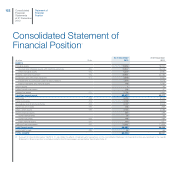 123
123 -
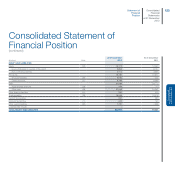 124
124 -
 125
125 -
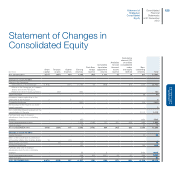 126
126 -
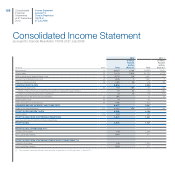 127
127 -
 128
128 -
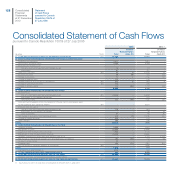 129
129 -
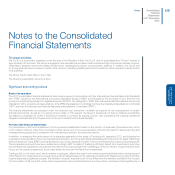 130
130 -
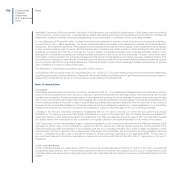 131
131 -
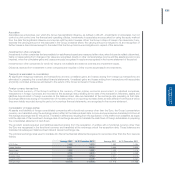 132
132 -
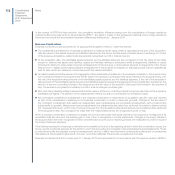 133
133 -
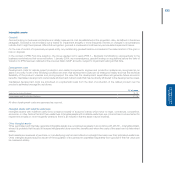 134
134 -
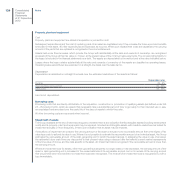 135
135 -
 136
136 -
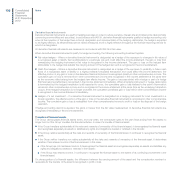 137
137 -
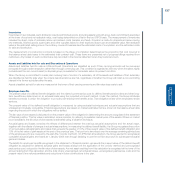 138
138 -
 139
139 -
 140
140 -
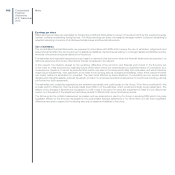 141
141 -
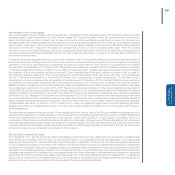 142
142 -
 143
143 -
 144
144 -
 145
145 -
 146
146 -
 147
147 -
 148
148 -
 149
149 -
 150
150 -
 151
151 -
 152
152 -
 153
153 -
 154
154 -
 155
155 -
 156
156 -
 157
157 -
 158
158 -
 159
159 -
 160
160 -
 161
161 -
 162
162 -
 163
163 -
 164
164 -
 165
165 -
 166
166 -
 167
167 -
 168
168 -
 169
169 -
 170
170 -
 171
171 -
 172
172 -
 173
173 -
 174
174 -
 175
175 -
 176
176 -
 177
177 -
 178
178 -
 179
179 -
 180
180 -
 181
181 -
 182
182 -
 183
183 -
 184
184 -
 185
185 -
 186
186 -
 187
187 -
 188
188 -
 189
189 -
 190
190 -
 191
191 -
 192
192 -
 193
193 -
 194
194 -
 195
195 -
 196
196 -
 197
197 -
 198
198 -
 199
199 -
 200
200 -
 201
201 -
 202
202 -
 203
203 -
 204
204 -
 205
205 -
 206
206 -
 207
207 -
 208
208 -
 209
209 -
 210
210 -
 211
211 -
 212
212 -
 213
213 -
 214
214 -
 215
215 -
 216
216 -
 217
217 -
 218
218 -
 219
219 -
 220
220 -
 221
221 -
 222
222 -
 223
223 -
 224
224 -
 225
225 -
 226
226 -
 227
227 -
 228
228 -
 229
229 -
 230
230 -
 231
231 -
 232
232 -
 233
233 -
 234
234 -
 235
235 -
 236
236 -
 237
237 -
 238
238 -
 239
239 -
 240
240 -
 241
241 -
 242
242 -
 243
243 -
 244
244 -
 245
245 -
 246
246 -
 247
247 -
 248
248 -
 249
249 -
 250
250 -
 251
251 -
 252
252 -
 253
253 -
 254
254 -
 255
255 -
 256
256 -
 257
257 -
 258
258 -
 259
259 -
 260
260 -
 261
261 -
 262
262 -
 263
263 -
 264
264 -
 265
265 -
 266
266 -
 267
267 -
 268
268 -
 269
269 -
 270
270 -
 271
271 -
 272
272 -
 273
273 -
 274
274 -
 275
275 -
 276
276 -
 277
277 -
 278
278 -
 279
279 -
 280
280 -
 281
281 -
 282
282 -
 283
283 -
 284
284 -
 285
285 -
 286
286 -
 287
287 -
 288
288 -
 289
289 -
 290
290 -
 291
291 -
 292
292 -
 293
293 -
 294
294 -
 295
295 -
 296
296 -
 297
297 -
 298
298 -
 299
299 -
 300
300 -
 301
301 -
 302
302 -
 303
303 -
 304
304 -
 305
305 -
 306
306 -
 307
307 -
 308
308 -
 309
309 -
 310
310 -
 311
311 -
 312
312 -
 313
313 -
 314
314 -
 315
315 -
 316
316 -
 317
317 -
 318
318 -
 319
319 -
 320
320 -
 321
321 -
 322
322 -
 323
323 -
 324
324 -
 325
325 -
 326
326 -
 327
327 -
 328
328 -
 329
329 -
 330
330 -
 331
331 -
 332
332 -
 333
333 -
 334
334 -
 335
335 -
 336
336 -
 337
337 -
 338
338 -
 339
339 -
 340
340 -
 341
341 -
 342
342 -
 343
343 -
 344
344 -
 345
345 -
 346
346
 |
 |

Notes
132 Consolidated
Financial
Statements
at 31 December
2012
In the context of IFRS First-time adoption, the cumulative translation difference arising from the consolidation of foreign operations
outside the Eurozone was set at nil, as permitted by IFRS 1; any gains or losses on the subsequent disposal of any foreign operations
therefore only include the accumulated translation differences arising since 1 January 2004.
Business Combinations
Business combinations are accounted for by applying the acquisition method. Under this method:
The consideration transferred in a business combination is measured at fair value, which is calculated as the sum of the acquisition-
date fair values of the assets acquired and liabilities assumed by the Group and the equity interests issued in exchange for control
of the acquiree. Acquisition-related costs are generally recognised in profit or loss as incurred.
At the acquisition date, the identifiable assets acquired and the liabilities assumed are recognised at their fair value at that date,
except for deferred tax assets and liabilities, assets and liabilities relating to employee benefit arrangements, liabilities or equity
instruments relating to share-based payment arrangements of the acquiree or share-based payment arrangements of the Group
entered into to replace share-based payment arrangements of the acquiree and assets (or disposal groups) that are classified as
held for sale, which are measured in accordance with the relevant standard.
Goodwill is measured as the excess of the aggregate of the consideration transferred in the business combination, the amount of any
non-controlling interest in the acquiree and the fair value of the acquirer’s previously held equity interest in the acquiree (if any) over
the net of the acquisition-date amounts of the identifiable assets acquired and the liabilities assumed. If the net of the acquisition-
date amounts of the identifiable assets acquired and liabilities assumed exceeds the aggregate of the consideration transferred, the
amount of any non-controlling interest in the acquiree and the fair value of the acquirer’s previously held interest in the acquiree (if
any), the excess is recognised immediately in profit or loss as a bargain purchase gain.
Non-controlling interest is initially measured either at fair value or at the non-controlling interest’s proportionate share of the acquiree’s
identifiable net assets. The selection of the measurement method is made on a transaction-by-transaction basis.
Any contingent consideration arrangement in the business combination is measured at its acquisition-date fair value and included
as part of the consideration transferred in the business combination in order to determine goodwill. Changes in the fair value of
the contingent consideration that qualify as measurement period adjustments are recognised retrospectively, with corresponding
adjustments to goodwill. Measurement period adjustments are adjustments that arise from additional information obtained during
the ‘measurement period’ (which may not exceed one year from the acquisition date) about facts and circumstances that existed as
of the acquisition date. Any changes in fair value after the measurement period are recognised in profit or loss.
When a business combination is achieved in stages, the Group’s previously held equity interest in the acquiree is remeasured at its
acquisition-date fair value and the resulting gain or loss, if any, is recognised in income statements. Changes in the equity interest in
the acquiree that have been recognised in Other comprehensive income in prior reporting periods are reclassified to profit or loss as if
the interest had been disposed.
If the initial accounting for a business combination is incomplete by the end of the reporting period in which the combination occurs, the
Group reports provisional amounts for the items for which the accounting is incomplete in the consolidated financial statements. Those
provisional amounts are adjusted during the measurement period to reflect new information obtained about facts and circumstances
that existed at the acquisition date which, if known, would have affected the amounts recognised at that date.
Business combinations that took place prior to 1 January 2010 were accounted for in accordance with the previous version of IFRS 3.
